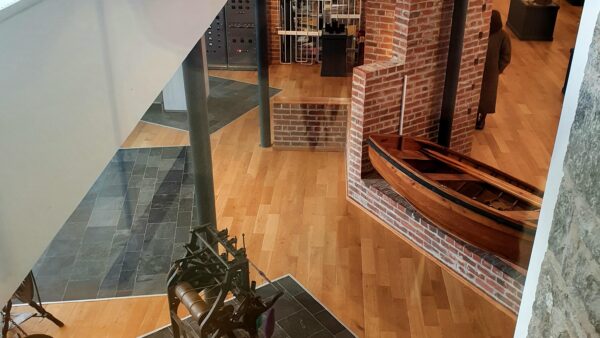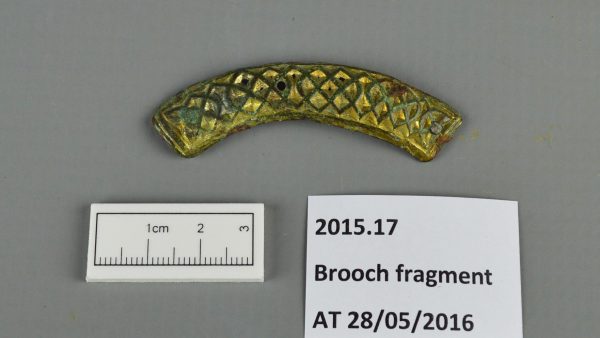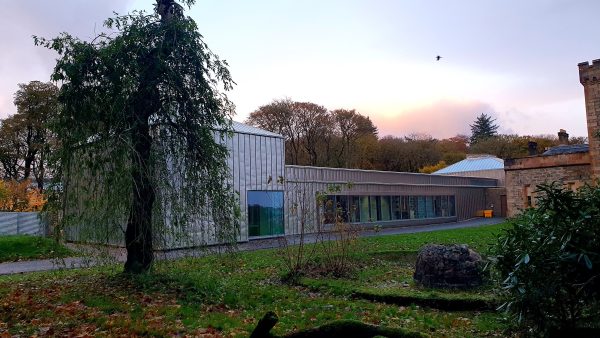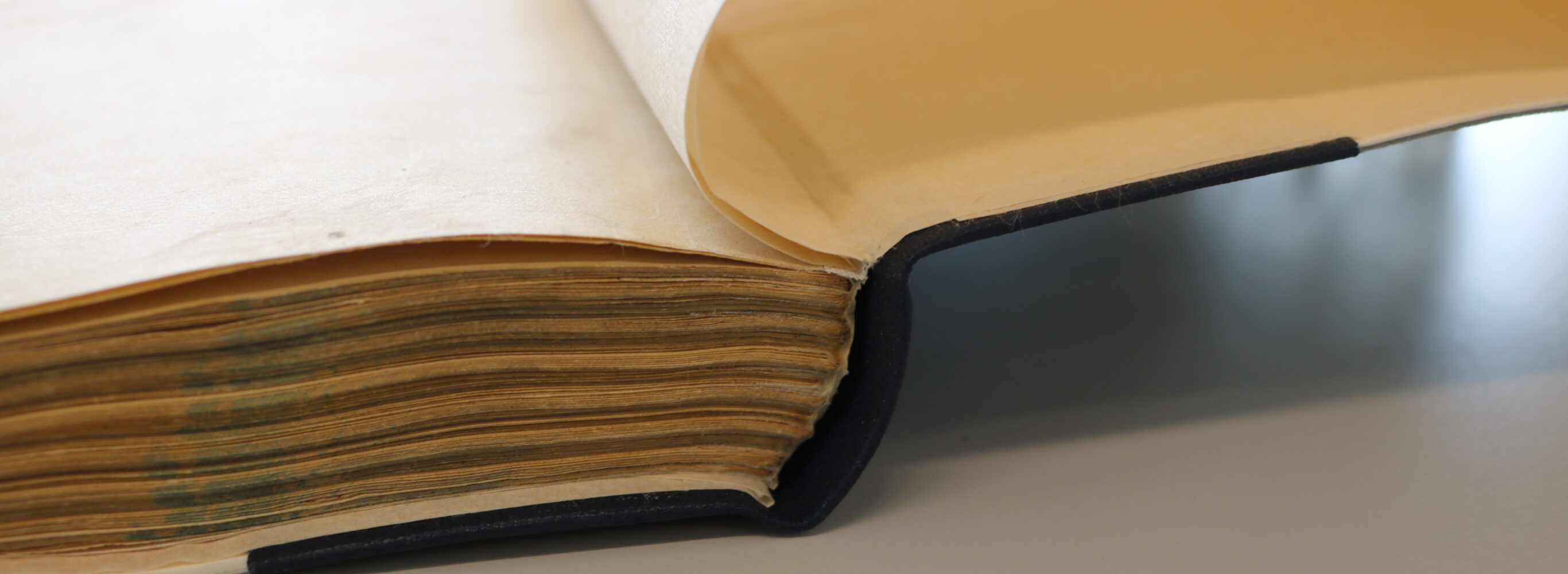
Conservation of Barra School Board collection
Five volumes of minutes of the Barra School Board archive collection dating from 1888 to 1932 have recently been conserved, thanks to a grant from the National Manuscripts Conservation Trust. Barra School Board was established under the 1872 Education Act when the state assumed responsibility for education and was responsible for providing education on the islands of Barra, Vatersay and Mingulay, funded from a parliamentary grant and local rates.
The volumes were in very poor condition as a result of inadequate storage conditions in the past, which meant they were too fragile to be used by archive staff or members of the public wishing to do research. The project aims were to reduce the risk of further damage to the volumes and treat them in order to stabilise them. The painstaking conservation treatment was carried out by accredited archive conservator Richard Aitken and his team at the Highland Archive Centre in Inverness.
The volumes included in the project were:
• IN4/1/1/R1.334 Barra School Board Minute book 1888-1902
• IN4/1/1/R1.335 Barra School Board Minute book 1902-1918
• IN4/1/1/R1.336 Barra School Board Scroll minute book 1904-1913
• IN4/1/1/R1.28 Barra School Board Minute book 1919-1922
• IN4/1/1/R1.29 Barra School Board/ District Education Committee Minute book 1923-1932
The minute books are an important source for a number of research topics including:
- Education administration in a remote area of the Highlands & Islands;
- Employment and training practices, historical pay data, trade union developments;
- Women’s employment;
- School curriculum development including place of Gaelic language in Scottish state education;
- Child welfare (medical programmes; link to poor relief system);
- Disease outbreaks;
- Customs and traditions (holidays, weddings);
- Social class and power relationships – the early minutes contain copy correspondence from Lady Gordon Cathcart, the notorious landowner of the time;
- Depopulation (Mingulay uninhabited since 1912);
- Family history.
These records complement the information in the log books of the individual schools, not all of which have survived, and therefore fill a gap.
All the volumes required extensive treatment from rebinding, to strengthening binding by re-sewing the front and last few sections. Some also required page repair or mould cleaning, as well as new front and back covers.
Now that the volumes have been fully repaired they are accessible for researchers, and it is hoped they can be digitised by specialists in future if funding can be found to carry this out. This would enable even wider access to the volumes.
The images below show details of the volumes before and after conservation treatment.
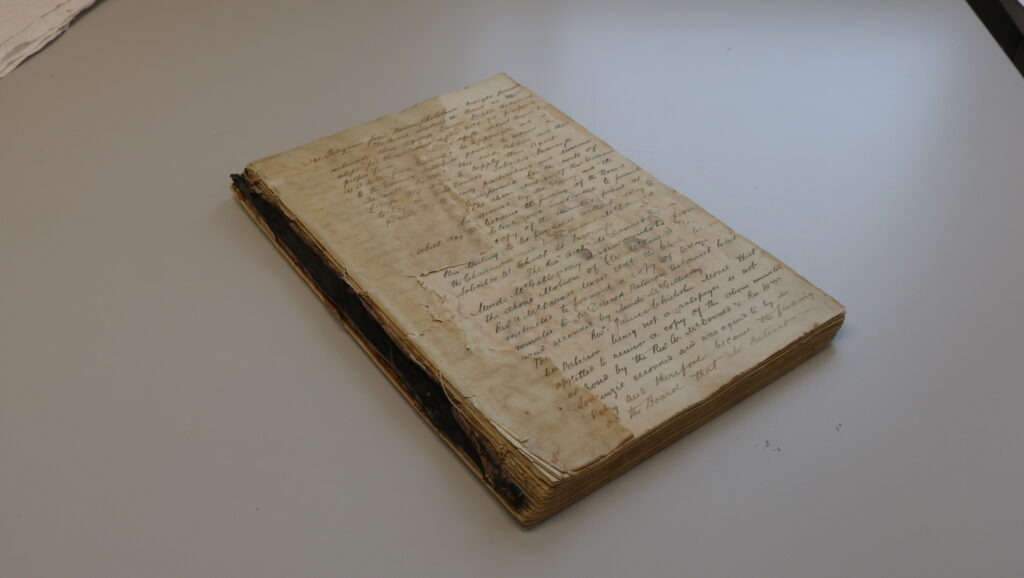
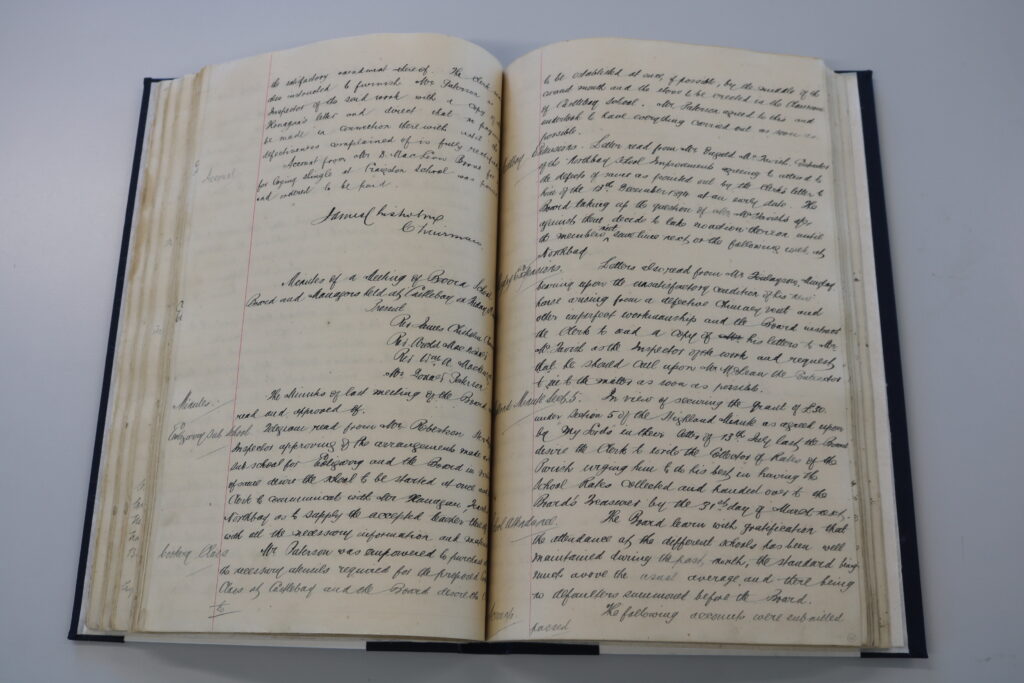
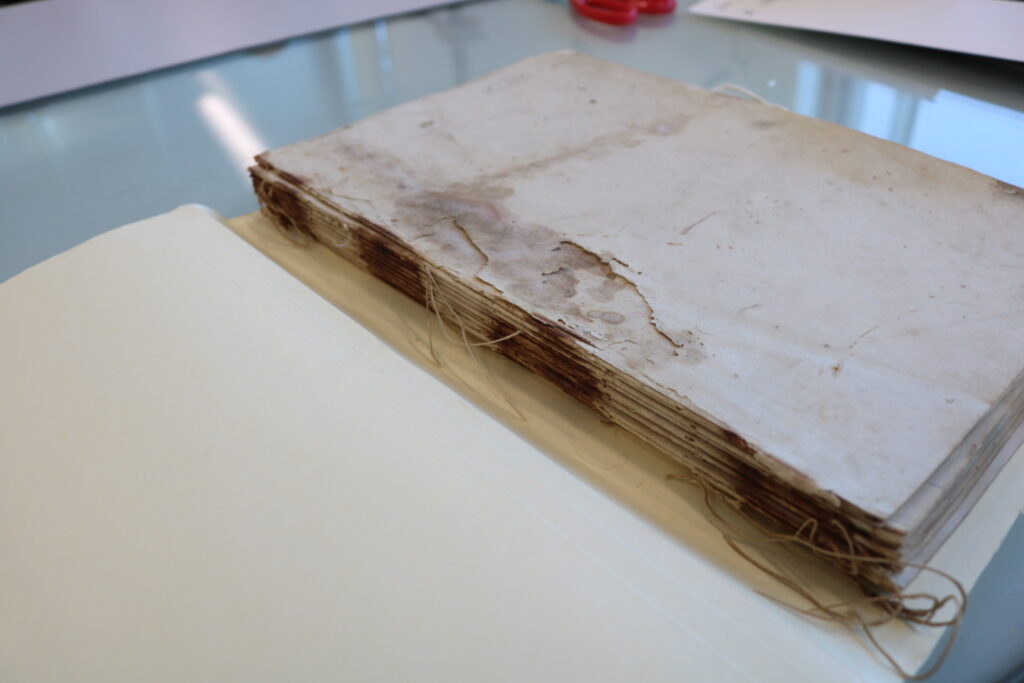
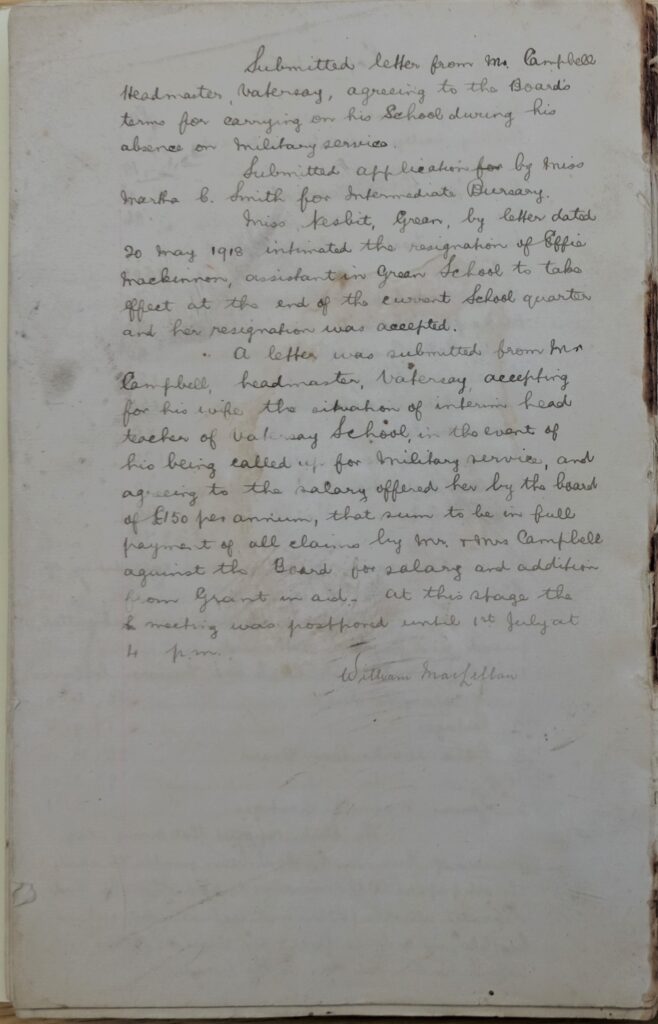
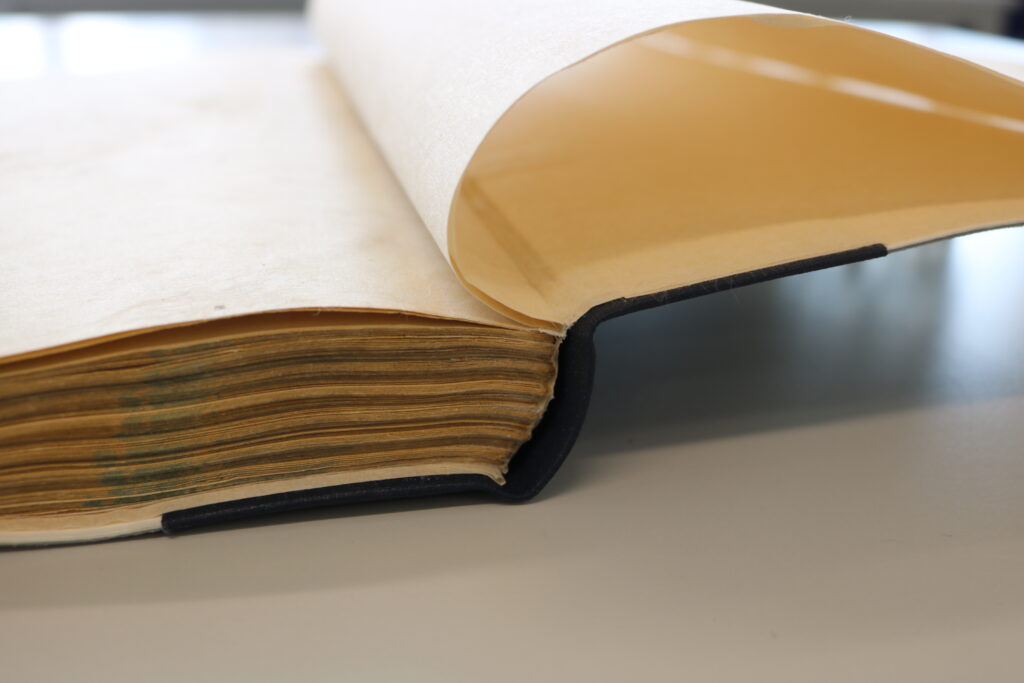
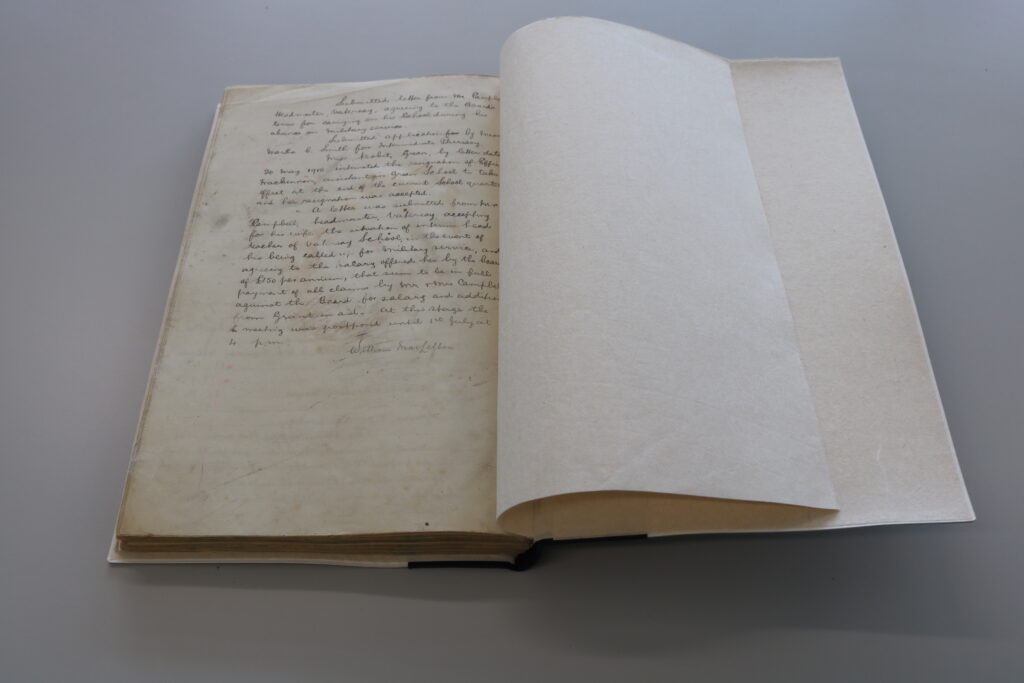
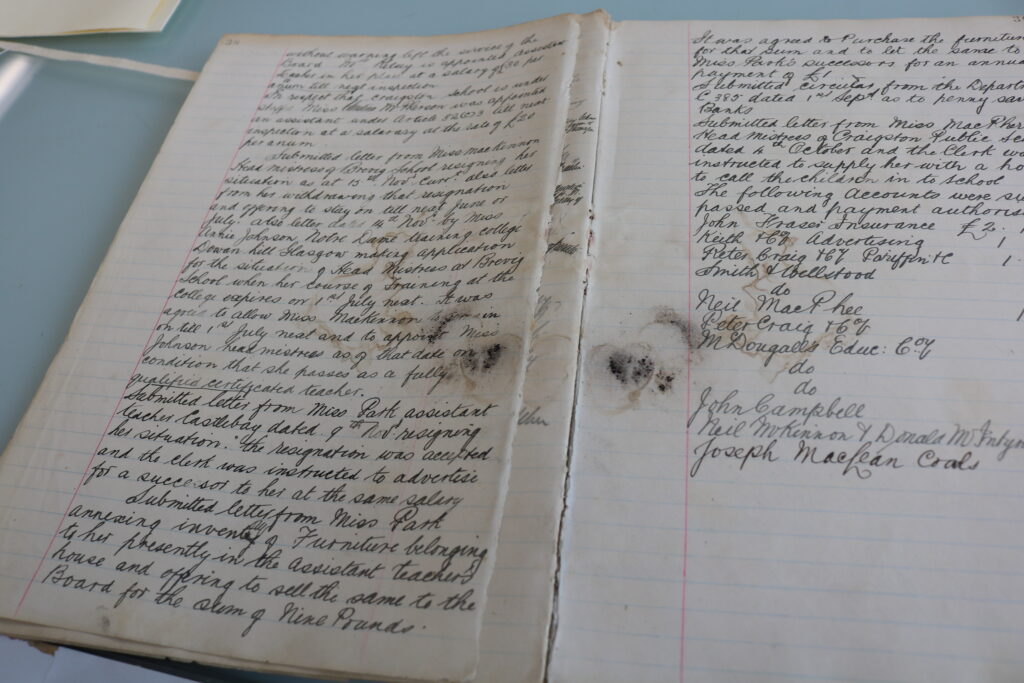
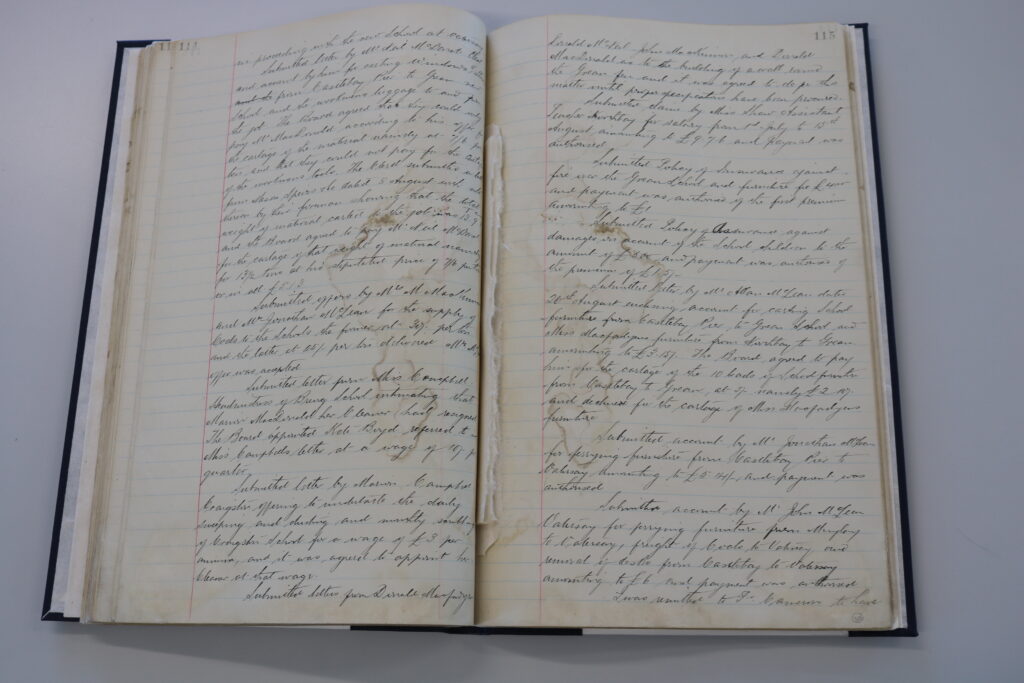
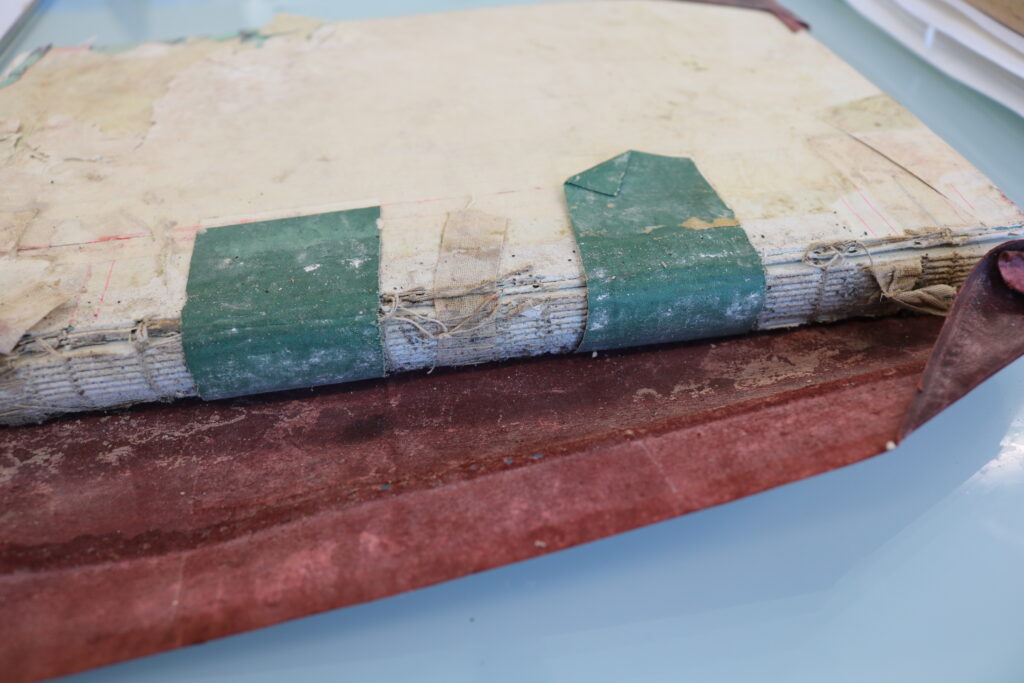
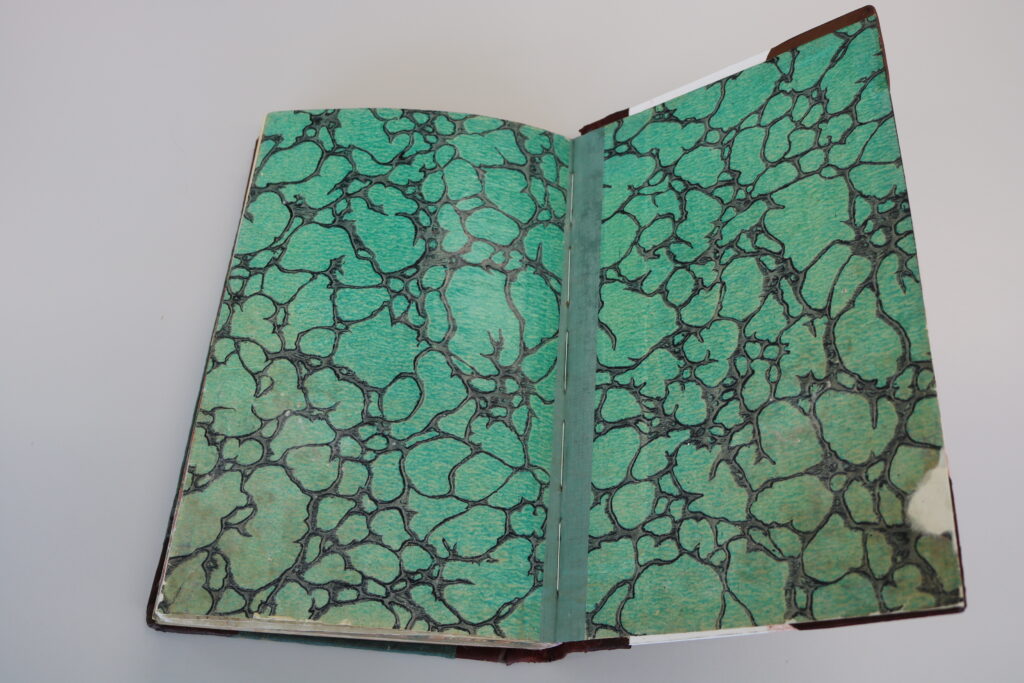
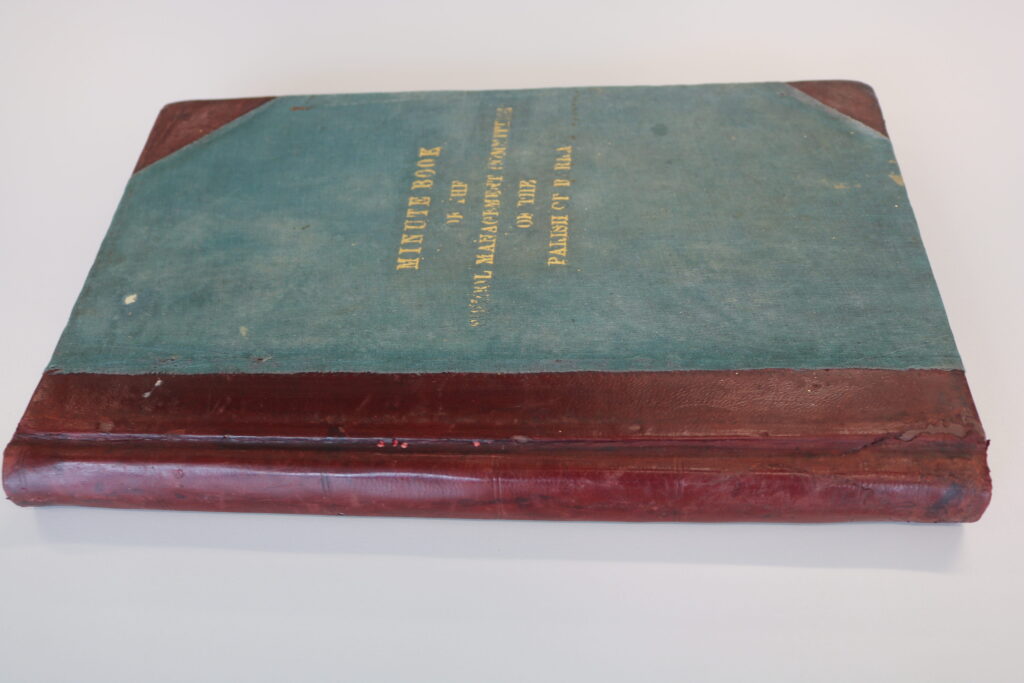
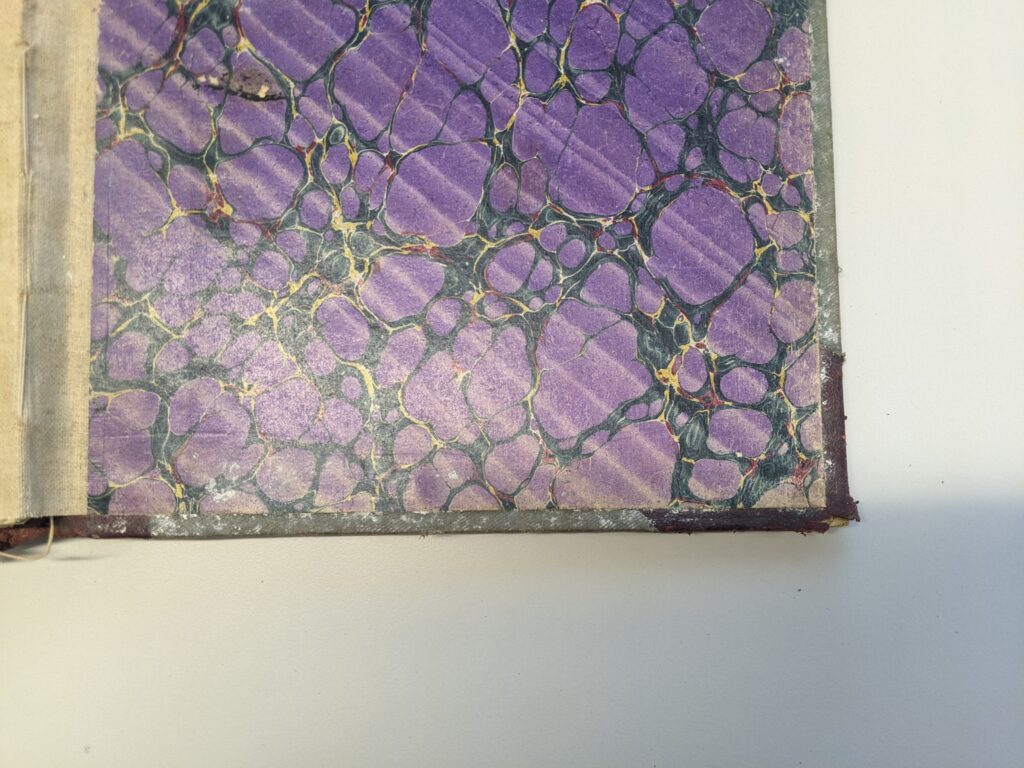
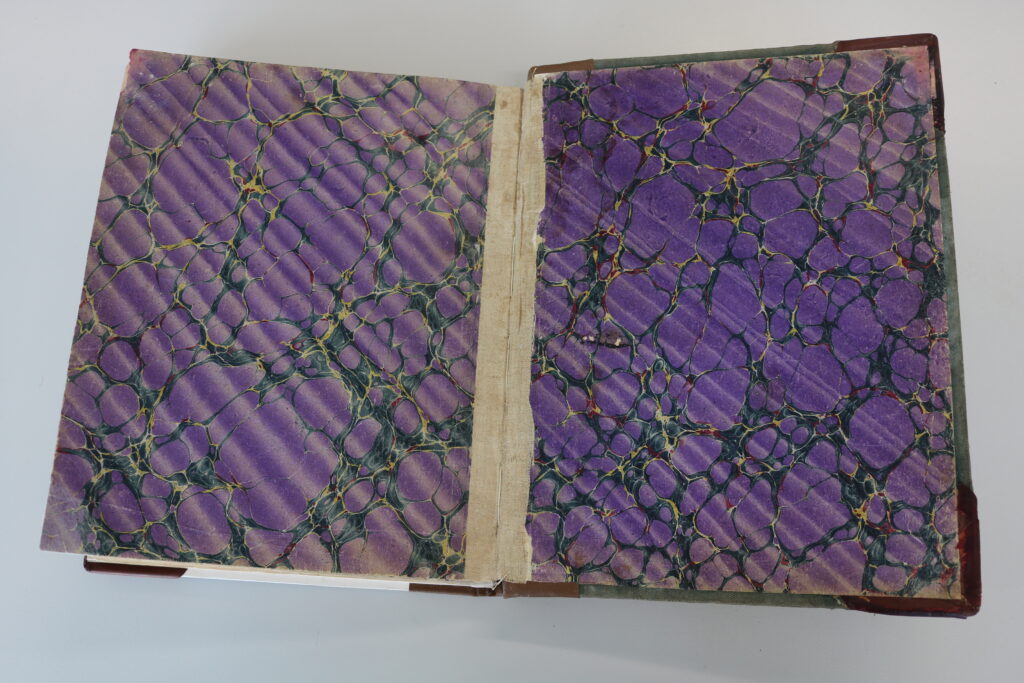
A video showing the intricate work involved in archive conservation, made by Highland Archives, is available here. While the item being treated in the film is different to those above, it provides an insight into the processes, techniques and skills involved.
